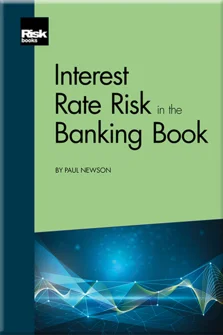An Overview of Banking
An Overview of Banking
Introduction
An Overview of Banking
Relevant Accounting and Financial Concepts
Fundamentals of Interest Rate Risk and the Banking Book
Standard Metrics for Identification and Assessment of IRRBB
Managing and Hedging IRRBB
Interest Rate Basis Risk
Behavioural Assumptions in the Management of IRRBB
Non-dated Liabilities
Other Types of Market Risk
Reporting and the Management Process
IRRBB: Its Links to the Operating Plan and Stress Testing
Regulatory Requirements
The objective of this book is to describe the impact on banks of changes to the general level interest rates and, to a lesser extent, changes to other market prices. However, before we consider such important matters in detail, it is worth stepping back to examine exactly what a bank is and what it does – this first chapter therefore offers a brief overview of the business of banking.
There is no precise or watertight definition of a bank or of banking, but the term “bank” usually describes an organisation that undertakes certain specific financial activities or functions, perhaps the most fundamental being that of acting as an intermediary between those who wish to borrow money and those who wish to lend it. The chapter will therefore begin with an outline of the main functions that banks perform in an economy, and the major financial products they offer to their customers. Not all banks will necessarily perform every function described, and some banks may well offer other services and products (such as insurance) that are not generally termed banking, but this should not
Copyright Infopro Digital Limited. All rights reserved.
As outlined in our terms and conditions, https://www.infopro-digital.com/terms-and-conditions/subscriptions/ (point 2.4), printing is limited to a single copy.
If you would like to purchase additional rights please email info@risk.net
Copyright Infopro Digital Limited. All rights reserved.
You may share this content using our article tools. As outlined in our terms and conditions, https://www.infopro-digital.com/terms-and-conditions/subscriptions/ (clause 2.4), an Authorised User may only make one copy of the materials for their own personal use. You must also comply with the restrictions in clause 2.5.
If you would like to purchase additional rights please email info@risk.net











